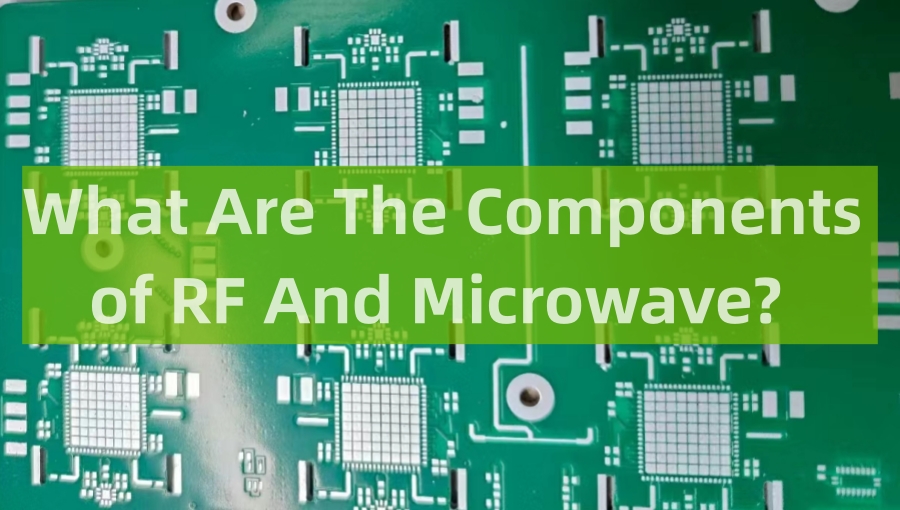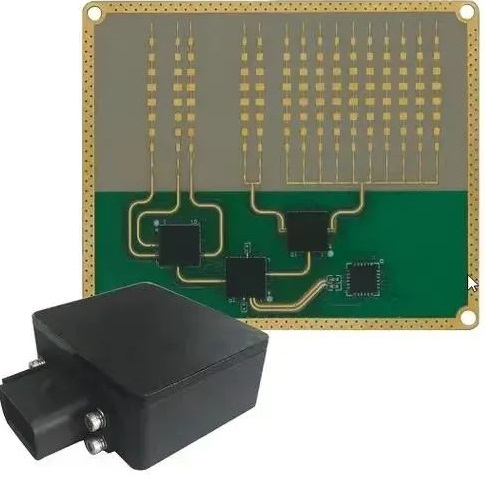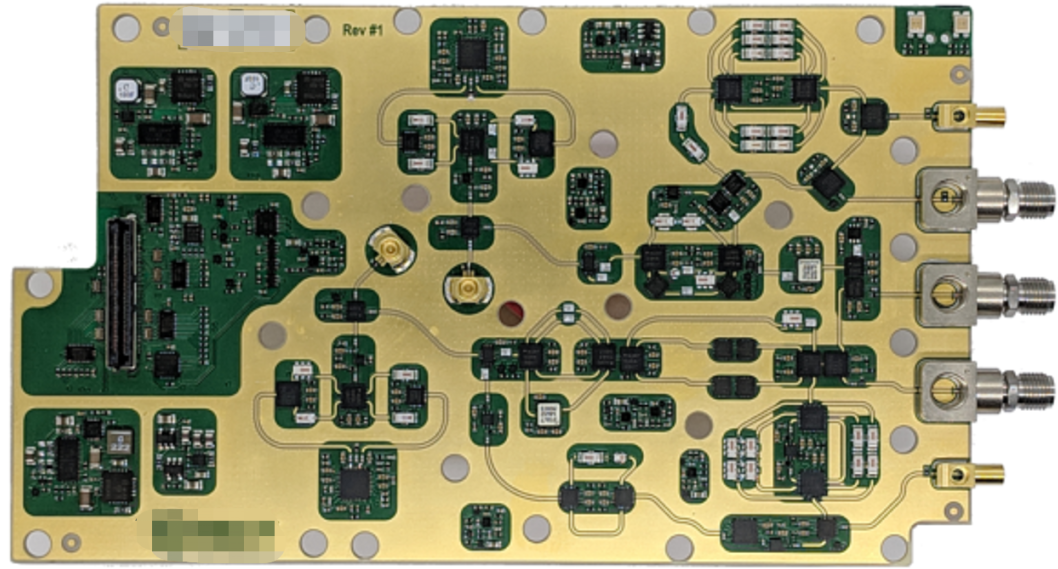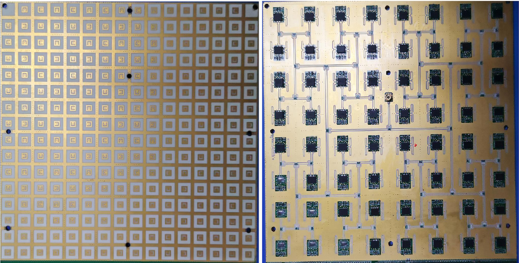What Are The Components of RF And Microwave?

High-frequency electrical systems are made up of Radio Frequency (RF) and Microwave components. These systems are used for a wide range of things, such as medical imaging, radar systems, satellite messaging, and telecommunications. Oscillators, mixers, amplifiers, filters, and transmitters are usually the most important parts.
A printed circuit board (PCB), and especially a high frequency PCB, is an important part of RF and microwave devices. High-frequency PCBs need to be carefully made so that they can handle the higher electromagnetic frequencies without losing a lot of energy or data quality.
In the world of high-frequency PCBs, some materials, like Rogers 4350B, are made to work with these kinds of devices. They make an excellent base for Rogers PCB design because they have a stable dielectric constant and low signal loss. This makes them perfect for Rogers 4350B PCB fabrication and makes sure that RF and microwave systems work well and reliably.
Importance of High Frequency PCB in RF and Microwaves
A high frequency PCB is critical to the operation of RF and microwave systems. These PCBs are carefully engineered to meet the unique challenges of high-frequency communications, such as signal integrity, heat dissipation, and cross-talk.
At high frequencies, the attributes of the material on the circuit board can have a big effect on how the electrical signals behave. For example, the material's dielectric constant, its loss tangent, and its thermal conductivity can all affect the quality of the data and how well the circuit works as a whole.
Materials like Rogers 4350B come into play here. Rogers 4350B is a high-frequency laminate material with a stable dielectric constant and low signal loss. This makes it a great choice for Rogers PCB used in RF and microwave applications.
These high-frequency PCBs can be made with precise tolerances and specifications using advanced Rogers 4350B PCB fabrication methods. These high-frequency PCBs can be created with precise tolerances and requirements using modern Rogers 4350B PCB fabrication methods. They enable efficient and dependable signal transmission and reception in applications where high-frequency performance is critical. Thus, the significance of high-frequency printed circuit boards (PCBs) in RF and microwave applications cannot be emphasized enough.

Role of Rogers 4350B in RF and Microwave
Because of how the material is made, Rogers 4350B is very important in RF and microwave uses. It is a hydrocarbon ceramic material that works better at high frequencies and costs less to make circuits out of.
Its low dielectric loss makes it a good choice for precision RF and microwave performance. This means that signals can pass with minimum energy loss through a Rogers PCB constructed from Rogers 4350B, assuring efficient performance in communication devices, antennas, and other high-frequency applications.
The Rogers 4350B is also useful because of how well it handles heat. In high-frequency uses, it is very important to keep heat from building up. Rogers 4350B's excellent thermal conductivity aids in heat dissipation and ensures the device's reliability and endurance.
Another important property for RF and microwave applications is a uniform dielectric constant throughout the board. This feature ensures that the signal speed remains constant across the Rogers 4350B PCB, resulting in fewer signal distortions and improved overall performance.
Rogers 4350B is often the material of choice in the Rogers 4350B PCB fabrication method, which attempts to generate high-quality, high-performance high-frequency PCBs due to these outstanding qualities.

Rogers 4350B PCB Fabrication Process
The Rogers 4350B PCB fabrication method follows normal PCB manufacturing stages, but with special parameters to ensure that the unique qualities of the Rogers 4350B are preserved and the finished result meets high-frequency performance requirements.
The process starts with designing the circuit, keeping in mind how Rogers 4350B works. The image is then put on the Rogers PCB material by using an ultraviolet light and a photoresist.
Next, the copper that isn't needed is etched away, leaving only the circuit routes that are needed. After the etching is done, the photoresist is taken off and the board is checked for any problems.
Several layers of Rogers 4350B are laminated together at a high temperature to make layered Rogers 4350B PCBs. The layers are lined up with the help of guide holes, and then they are stuck together with pressure and heat.
Once the layers are joined together, holes are drilled for mounting components and making vias to connect the layers electrically. To ensure good conductivity, the perforations are subsequently coated with copper.
After plating, solder mask is put on the board to protect the circuitry, and silk screen is used to put labels and other marks on the board.
Due to the unique properties of the material and the high-frequency applications it is used for, making Rogers 4350B PCBs takes a very careful process. The output is ahigh-frequency PCB that works well in RF and microwave applications.

Benefits and Applications of Rogers 4350B and High-Frequency PCBs
Rogers 4350B and high-frequency PCBs have a lot of benefits, especially when used in RF and microwaves. Rogers 4350B has great electrical qualities, and its performance is stable over a wide range of frequencies. Its low dielectric loss means that it loses very little information, which saves energy and makes the signal clearer.
Also, Rogers 4350B has a high thermal conductivity, which is important for high-frequency uses where heat builds up quickly. It works well and lasts longer because it doesn't change much in temperature.
These PCBs are made using advanced Rogers 4350B PCB fabrication methods and can be used in many different fields. They are an important part of wireless communication devices, base stations, and radar systems because they make it possible to send data quickly and reliably. They are used in high-frequency scanning and imaging equipment in the medical domain.
Wrapping Up
In conclusion, RF and microwave components, especially high-frequency PCBs made from Rogers 4350B, are the backbone of today's high-speed and high-frequency uses.
With the help of advanced Rogers 4350B PCB fabrication methods, these parts work well and reliably, helping to move communication, medical imaging, and many other technologies forward.




